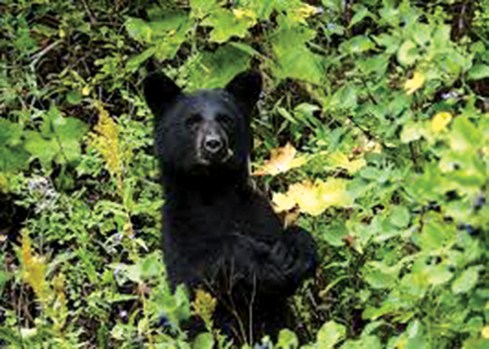East Tennessee Outdoors: Tennessee Black Bears – Part 1
Published 6:00 am Friday, July 12, 2019
May 2000. Glenda Bradley was hiking along the Pigeon River Trail near Elkmont, Tennessee.
Her ex-husband was with her this day and he had left the trail to fish the Pigeon River.
She had planned on making a day of it and had brought sandwiches and drinks in her pack. Suddenly, a female black bear and a cub stood in front of her on the trail.
The bears charged.
No one heard her screams and no one came and stopped the attack. The bears killed her, moved her body into a safe place and ate a portion of her.
Later, the bears would be found hovering over the body, and both bears would be killed.
The sandwiches in her pack were not touched. It was the first time in recorded history that a female black bear saw a human as prey and had attacked and eaten its victim.
April 2006. Elora Petrasek and her two children took a short hike to a waterfall near Chattanooga, Tennessee.
They made it to the waterfall when a large male black bear attacked them. The bear grabbed her two-year-old son and tried to drag the child off.
When the mother grabbed a stick and beat the bear on the head, the bear dropped the child and attacked Elora, severely wounding her. Her little boy escaped, and the bear turned and ran into the undergrowth.
What Elora didn’t know was that her 7-year-old daughter had hidden in the undergrowth when the attack started.
The bear found the little girl, killed her and carried her to a safer place to eat her.
When searchers found her body, the large male bear was standing over the body, guarding its kill.
The bear turned and ran. After several days of tracking the bear, rangers were able to set cage traps and catch it.
He was euthanized and after a necropsy was performed, it was determined that the bear did indeed eat part of the child.
Bears. Like them or love them, they are a part of our East Tennessee mountains.
If you spend enough time in the mountains, the odds are very good that you will have an encounter with one of these apex predators.
They are there and we have to live with the idea that they may be near us as we fish, hunt, hike or picnic.
The media and cartoons have given us an image of bears as tame, cute and lovable animals. They have depicted them as warm, funny and fat. Who doesn’t love Winnie the Pooh or laugh at Yogi Bear living at Jellystone Park?
We buy stuffed bears to comfort children at night, and even use animated bears to sell toilet paper (I still haven’t figured that one out!). Bears are cute, loveable creatures that would not harm a fly. Wrong.
The bears you may encounter in the woods will simply act like the wild animals that they are.
We get into trouble when we forget this simple fact. Yes, a vast majority of bears will avoid human contact, but don’t forget that they will fight back if they are cornered, threatened, or see harm coming to their cubs. This is when bears can become deadly.
There have been only two confirmed deaths by black bears in the state of Tennessee in the last 50 years.
The above stories are those two confirmed deaths. You have a better chance of being killed by bee stings, lightning, or domesticated dogs than bears.
But there is always a chance that you will have a problem with a bear that is having a bad day.
What can you do if you come across a bear in your outdoor pursuits? How can you stay alive and avoid a mauling by one of nature’s most majestic animals?
We will tackle that question in the next East Tennessee Outdoors column.








